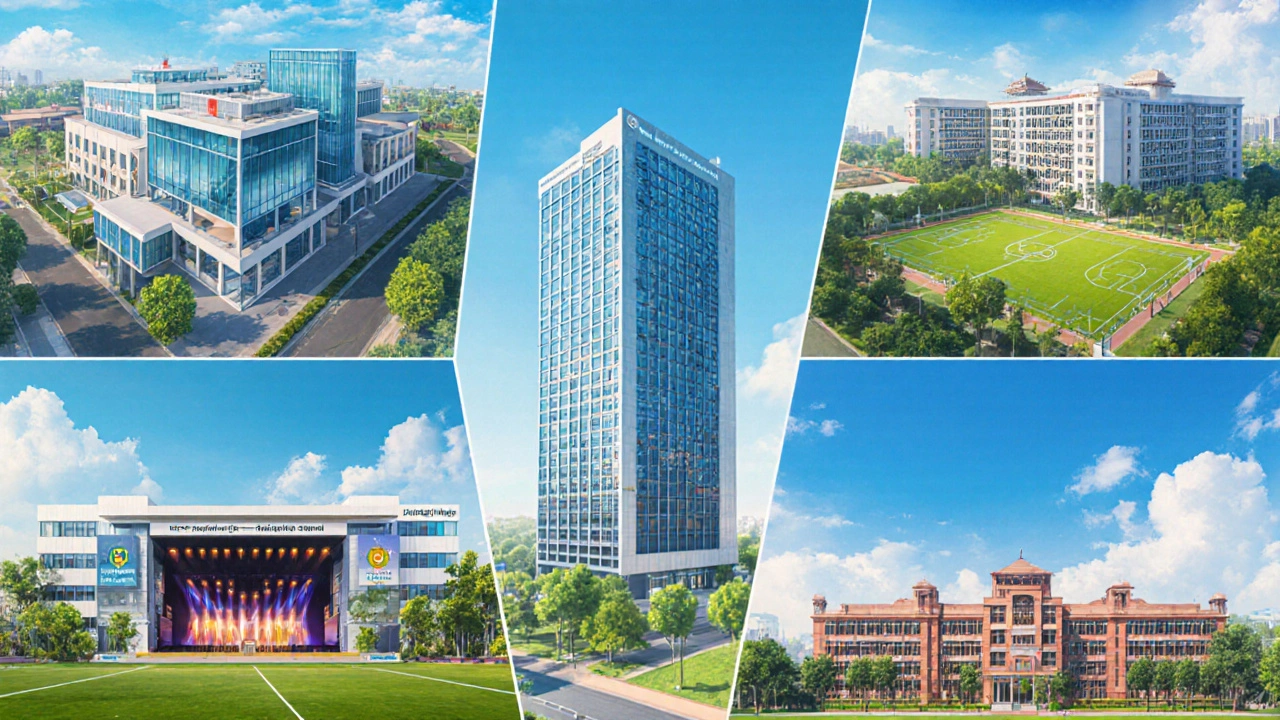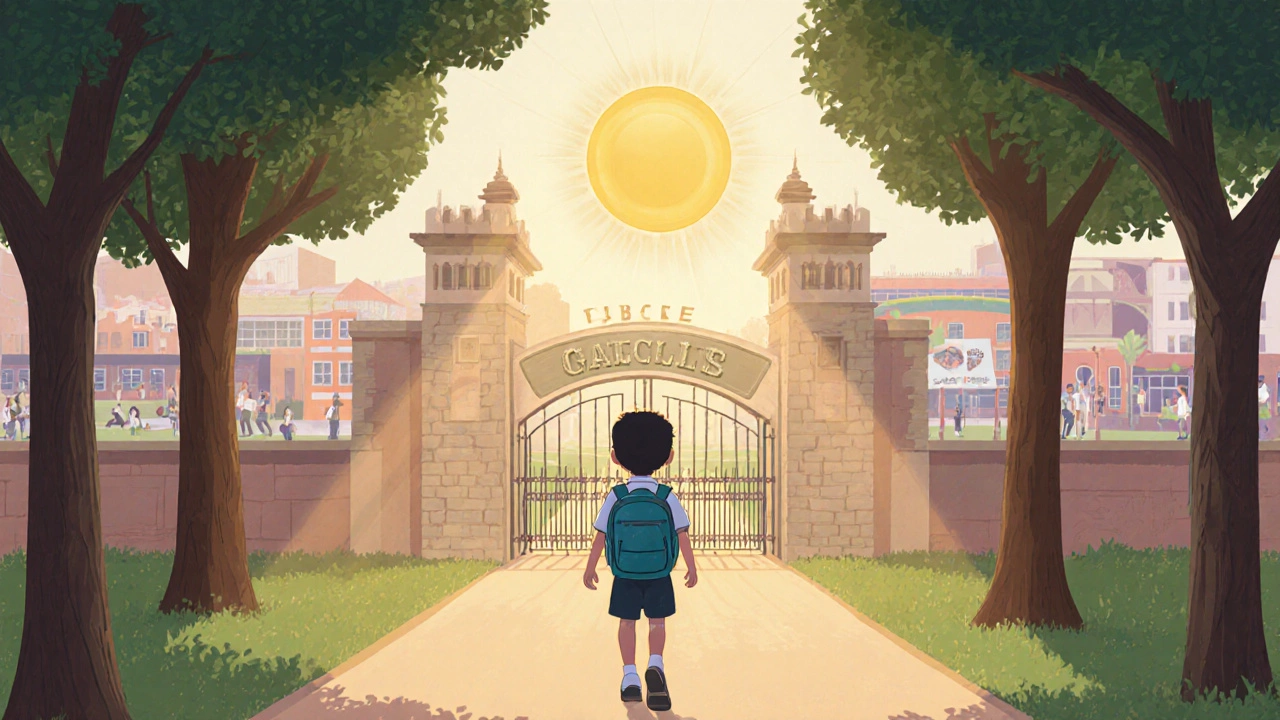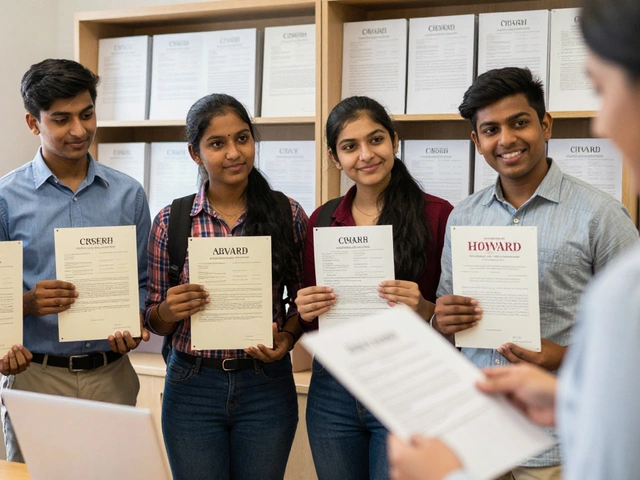When parents ask, "Which school is top in CBSE?" they’re looking for more than just a name-they want proof, real numbers, and a feel for how each school lives up to the hype. Below you’ll find a step‑by‑step guide that breaks down the ranking methodology, lists the current leaders, and shows you a quick comparison table so you can pick the right fit for your child.
First, let’s set the stage.
CBSE is the Central Board of Secondary Education, a national educational board in India that conducts the Class 10 and Class 12 board exams and prescribes a uniform curriculum for over 21,000 schools. The board’s focus on a balanced mix of science, mathematics, languages, and life skills makes its schools a popular choice for families across the country.
How CBSE School Rankings Are Determined
There’s no official ‘CBSE ranking’ released by the board, so independent agencies and education portals compile their own lists. Most rankings rely on four core pillars:
- Academic performance: Average percentage in the Class 10 and Class 12 board exams over the past three years.
- Infrastructure: Availability of labs, libraries, sports facilities, and smart classrooms.
- Co‑curricular excellence: Success in STEM competitions, arts, music, and community service.
- Parent & student satisfaction: Survey scores collected from alumni and current families.
Weightings differ, but a typical formula looks like this:
- Academic performance - 45%
- Infrastructure - 20%
- Co‑curricular - 15%
- Satisfaction - 20%
Data comes from board results, school‑provided reports, and third‑party surveys such as the Annual Education Survey (AES) 2024.
The Current Leaders - Top 5 CBSE Schools in 2025
Based on the above criteria, the following schools consistently rank at the top across multiple ranking platforms (EducationWorld, Times Education, and StudyIndia). All numbers are from the 2024‑2025 academic year unless noted otherwise.
1. Delhi Public School, Azaad Nagar (DPS Azaad Nagar)
Delhi Public School (DPS) is a nation‑wide chain of CBSE schools known for its rigorous academics and expansive co‑curricular program. The Azaad Nagar campus in New Delhi topped the list with a 97.3% average board result, a 94% parent‑satisfaction score, and state‑of‑the‑art labs for robotics and biotechnology.
2. The Shri Ram School, Vasant Vihar
Located in Delhi’s upscale Vasant Vihar area, this school boasts a 96.8% average board result, a 92% satisfaction rating, and a unique ‘Innovation Lab’ where students collaborate with engineers from Indian Institute of Technology (IIT) Delhi on real‑world projects.
3. Mount Carmel School, Bhubaneswar
Mount Carmel consistently scores above 96% in board exams and is praised for its holistic approach-sports fields, a performing arts center, and a strong emphasis on community service through its ‘Carmel Cares’ program.
4. St. Xavier’s High School, Mumbai
St. Xavier’s leads the western region with a 95.9% average result, premium infrastructure (including a digital library with 20,000 e‑books), and a STEM Olympiad team that won gold at the International Science Fair 2024.
5. Kendriya Vidyalaya (KVs) - Sector 62, Chandigarh
Often overlooked, KVs are government‑run CBSE schools that deliver remarkable consistency. The Sector 62 campus posted a 95.5% average result and a 90% satisfaction score, making it the top government‑funded option.
Regional Highlights - Where the Best CBSE Schools Are Located
Even if a school doesn’t appear in the top five, many regions have excellent choices. Below is a quick snapshot of standout schools by zone.
- North India: DPS Azaad Nagar (Delhi), The Shri Ram School (Delhi), St. James’ School (Lucknow).
- South India: Velammal Vidhyalaya (Chennai), The Shri Venkateswara School (Hyderabad), Modern School (Bengaluru).
- East India: Kendriya Vidyalaya (Kolkata), St. Paul’s School (Bhubaneswar), Delhi Public School (Patna).
- West India: St. Xavier’s (Mumbai), Delhi Public School (Ahmedabad), Ryan International School (Pune).

How to Choose the Right CBSE School for Your Child
Ranking tables give you a starting point, but the right fit depends on personal factors. Keep these pointers in mind:
- Location & commute: A 30‑minute travel time reduces fatigue and improves study time.
- Class size: Smaller groups (≤30 students) mean more individual attention.
- Teaching style: Some schools focus on rote learning; others emphasize project‑based learning.
- Extracurricular balance: Check if the school offers clubs that match your child’s interests (e.g., robotics, drama, sports).
- Fee structure: CBSE schools vary wildly-from INR 45,000 per year for government schools to INR 250,000 for elite chains.
- Alumni outcomes: Schools with strong university placement records can open doors for competitive exams like IIT‑JEE and NEET.
Visiting the campus, sitting in on a class, and talking to current parents are the best ways to gauge fit.
Common Pitfalls & Misconceptions
Even the most diligent parents can fall into traps. Watch out for these:
- “Board‑exam score = overall quality”: A school may have stellar results but limited sports or arts facilities.
- “Higher fees guarantee better education”: Some pricey schools focus on branding rather than teaching excellence.
- “All CBSE schools follow the same syllabus”: While the core curriculum is uniform, schools add enrichment modules that vary widely.
- “Big name = better teachers”: Teacher quality is measured by student outcomes, not just qualifications.

Quick Comparison Table - Top 5 CBSE Schools (2025)
| School | Location | Average Board % (2024‑25) | Parent Satisfaction | Notable Feature |
|---|---|---|---|---|
| Delhi Public School, Azaad Nagar | New Delhi | 97.3% | 94% | Robotics & Biotechnology labs |
| The Shri Ram School, Vasant Vihar | Delhi | 96.8% | 92% | Innovation Lab with IIT partnership |
| Mount Carmel School | Bhubaneswar | 96.5% | 91% | Extensive community‑service program |
| St. Xavier’s High School | Mumbai | 95.9% | 93% | Digital library with 20,000 e‑books |
| Kendriya Vidyalaya - Sector 62 | Chandigarh | 95.5% | 90% | Best government‑funded infrastructure |
Takeaway
If you’re hunting for the top CBSE schools, start with the five listed above, then narrow down based on location, fees, and extracurricular fit. Remember, a school’s ranking is a useful shortcut, but the day‑to‑day experience for your child matters most.
Frequently Asked Questions
How are CBSE board results calculated?
Each student’s answer sheet is marked by a team of examiners. The marks are then converted to a percentage, and the school’s average is the mean of all percentages for that class. Rankings usually use a three‑year rolling average to smooth out anomalies.
Do CBSE schools have a uniform fee structure?
No. Fees vary by board type (private vs. government), city cost of living, and the facilities the school offers. Government‑run KVs often charge below INR 20,000 per year, whereas elite chains can exceed INR 200,000.
Is board‑exam performance the only factor for college admissions?
While a high CBSE percentage is essential, top colleges also consider national entrance exams (JEE, NEET), extracurricular achievements, and personal interviews.
Can I switch CBSE schools after Class 8?
Yes, but the new school will ask for previous marksheets, a transfer certificate, and sometimes a brief interview to ensure the student can handle the curriculum pace.
Do CBSE schools offer online learning options?
Many top schools have blended learning models-live virtual classes, recorded lectures, and digital assignments-especially post‑COVID. Check each school’s tech policy for specifics.




